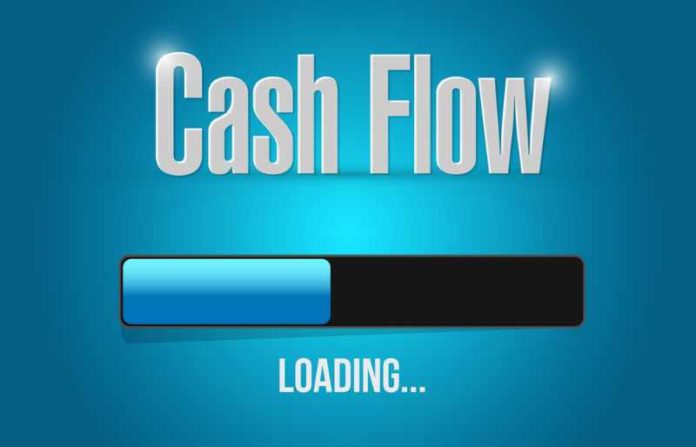By Rishav Chopra
As a small businesses owner, particularly those that are just starting out, having good cash flow means employees are paid on time and business expenses or bills get paid completely. The opposite is also true; poor cash flow means living invoice-to-invoice, chasing debtors, and insecurity for employees and creditors. Unfortunately, a recent global study on cash flow from my company, Intuit QuickBooks, found that the majority of small businesses (61 percent) struggle with cash flow or maintaining a balance of money in and money out. Even more unsettling, 69 percent of small business owners say they have been kept up at night by ongoing concerns about their cash flow status.
So what can a small business do to improve cash flows and bring in more certainty to their business?
Often when small businesses run into cash flow trouble, they focus on things like increasing sales or reaching new customers. While these are worthwhile goals, they actually aren’t the best way to improve cash flow immediately. Instead, the answer lies in the tools or platforms you use for getting paid faster from your customers and speeding up payments settlement times to receive your funds sooner.
Why Getting Paid Faster Is Key to Healthy Cash Flow
Cash flow is much more complex than it would appear at first glance and a cash flow crunch isn’t simply a matter of not doing enough business. In fact, our study found that the problem isn’t that small businesses and self-employed workers don’t have enough funds in the pipeline – it’s that they don’t have the funds readily available when real-time expenses pop up. In fact, the average U.S. small business has $53,399 in outstanding receivables! It’s no wonder that with so much money waiting to be processed that small businesses struggle with cash flow and ad hoc expenses.
The research also found that the main cause for this high number of outstanding receivables isn’t that customers aren’t paying on time, but rather it’s due to the amount of time it takes to process payments. Even though you may “get paid” – i.e. the customer swipes their credit card or pays an invoice – it may still take days, even weeks, before that money hits your accounts. In fact, nearly two thirds (66 percent) of small business owners said that the time it takes the money to process after receiving a payment has the largest impact on their company’s cash flow. This is compared to not getting paid by customers or clients within the terms of the payment system (34 percent).
Strategies to Speed Up Payments
Recognizing the vital importance that payment processing plays in maintaining positive cash flow, how can you speed things up? Here are some strategies you can implement immediately to improve your payment processing, overall cash flow and help you sleep better at night.
Embrace Electronic Invoicing: Despite the digital world we now live in, many small businesses still don’t have credit card enabled invoices. As a matter of fact, around 25 billion invoices are processed annually in the U.S. and Europe, with 75 percent done using traditional paper invoicing. Many of these paper invoices are lost or forgotten by the time they reach the customer. Manual invoices unnecessarily slow down the payment process. Who has time to wait for a paper check in the mail? By introducing electronic invoices that are credit card enabled, you can drastically expedite payment. In fact, today, 240M invoices are sent annually by small businesses using QuickBooks and those small businesses that send pay enabled invoices are three times more likely to be paid on the same day than via others means.
Additionally, with advancements like progress invoicing, small businesses can bill customers for ongoing projects and get paid even before they begin their work using advanced deposits or incrementally as they complete stages of a job, rather than waiting until the conclusion of a long project to receive payment.
Demand Next Day Deposit: Normally when a small business is paid with a credit card, whether it is swiped in a store or keyed in manually, it can take up to three business days for the payment to post to their bank account. For Automatic Clearing House (ACH) transactions this can take up to five days, sometimes even a full week. But this delay doesn’t have to be the norm! The payments industry needs to innovate to provide next day deposit on all credit card and ACH transactions, and small businesses should ensure their payment systems function is up to date with this new standard. With solutions like QuickBooks Payments, merchants receive the benefit of next-day funding for both credit cards and ACH, so money gets into their accounts the next business day and small businesses gets access to funds they desperately need right away - helping them with one of the biggest pain points they face: managing cash flow!
Cash flow is without a doubt one of the toughest challenges you’ll face as a small business owner. By ensuring your tools are up-to-date and embracing electronic invoicing payments and platforms supporting next day deposit, you can easily and immediately improve cash flow and your overall odds of success.
Rishav Chopra is with Business Operations & Revenue Optimization for Global Payments at Intuit and has 10 years of experience advising senior executives on business strategy, product marketing, planning & consumer/market insights in North America and APAC regions.
Cash flow stock photo by alexmillos/Shutterstock







